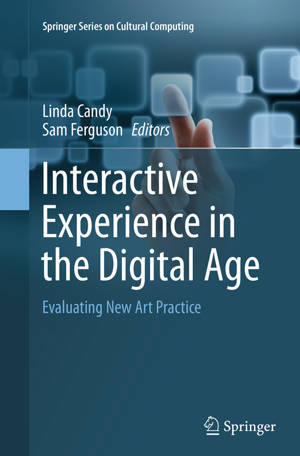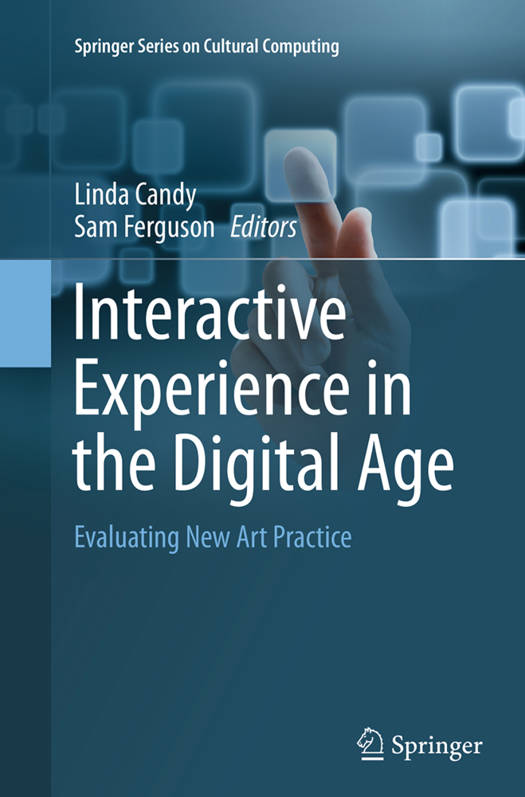
Door een staking bij bpost kan je online bestelling op dit moment iets langer onderweg zijn dan voorzien. Dringend iets nodig? Onze winkels ontvangen jou met open armen!
- Afhalen na 1 uur in een winkel met voorraad
- Gratis thuislevering in België vanaf € 30
- Ruim aanbod met 7 miljoen producten
Door een staking bij bpost kan je online bestelling op dit moment iets langer onderweg zijn dan voorzien. Dringend iets nodig? Onze winkels ontvangen jou met open armen!
- Afhalen na 1 uur in een winkel met voorraad
- Gratis thuislevering in België vanaf € 30
- Ruim aanbod met 7 miljoen producten
Zoeken
Interactive Experience in the Digital Age
Evaluating New Art Practice
€ 52,95
+ 105 punten
Omschrijving
The use of interactive technology in the arts has changed the audience from viewer to participant and in doing so is transforming the nature of experience. From visual and sound art to performance and gaming, the boundaries of what is possible for creation, curating, production and distribution are continually extending. As a consequence, we need to reconsider the way in which these practices are evaluated. Interactive Experience in the Digital Age explores diverse ways of creating and evaluating interactive digital art through the eyes of the practitioners who are embedding evaluation in their creative process as a way of revealing and enhancing their practice. It draws on research methods from other disciplines such as interaction design, human-computer interaction and practice-based research more generally and adapts them to develop new strategies and techniques for how we reflect upon and assess value in the creation and experience of interactive art. With contributions from artists, scientists, curators, entrepreneurs and designers engaged in the creative arts, this book is an invaluable resource for both researchers and practitioners, working in this emerging field.
Specificaties
Betrokkenen
- Uitgeverij:
Inhoud
- Aantal bladzijden:
- 267
- Taal:
- Engels
- Reeks:
Eigenschappen
- Productcode (EAN):
- 9783319350523
- Verschijningsdatum:
- 23/08/2016
- Uitvoering:
- Paperback
- Formaat:
- Trade paperback (VS)
- Afmetingen:
- 156 mm x 234 mm
- Gewicht:
- 394 g

Alleen bij Standaard Boekhandel
+ 105 punten op je klantenkaart van Standaard Boekhandel
Beoordelingen
We publiceren alleen reviews die voldoen aan de voorwaarden voor reviews. Bekijk onze voorwaarden voor reviews.










